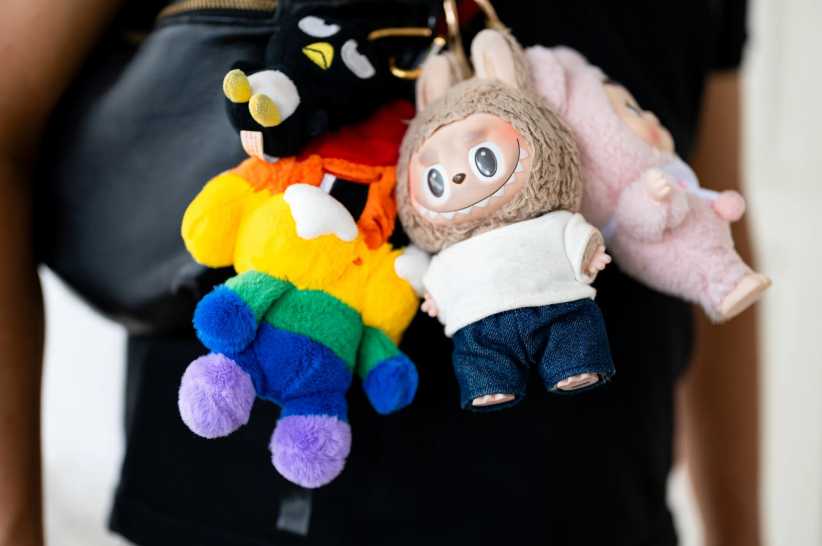Tasty toothpastes, kid-friendly fluoride rinses, and even dinosaur-shaped “flossers” line nearly an entire aisle at many grocery stores and pharmacies these days. And yet, early-childhood cavities are on the rise, says Indru Punwani, DDS, MSD, professor and head of the department of pediatric dentistry at the University of Illinois at Chicago.
Treating cavities in very young children comes with certain risks, Punwani says, because at this age, “we have to use drugs to sedate the child” before treatment can be performed. And at any age, cavities are just not fun. It’s much better to head off decay in the first place.
Fortunately, “caries [cavities] are totally preventable,” Punwani explains. But fighting cavities requires parents to start teaching good dental habits early — and to stay vigilant as kids get older. Here’s what you can do to help ensure a cavity-free future for your child.
Toddlers with cavities
Dentists are now seeing cavities in children as young as 15 to 18 months, Punwani says. And heavy decay and dental infections can have devastating effects on the quality of a child’s life, adds Neal G. Herman, DDS, clinical professor of pediatric dentistry at the New York University College of Dentistry.
“Pain, swelling and early tooth loss may result in eating and nutritional difficulties. These, in turn, can cause lethargy, impaired learning, poor behavior, moodiness and a general failure to thrive,” Herman says.
“It used to be that you didn’t really see caries until about 5 years of age,” Punwani notes. Why the change? “The use of the bottle is the number-one culprit,” he says, explaining that it’s not giving a baby or toddler a bottle, per se, that causes cavities, but “using it as a pacifier rather than as a way to give nutrition.”
When a child is allowed to have a bottle of formula or juice (or, worst-case scenario, a sugary drink) for an indefinite period of time, she will tend to use it as a pacifier, sucking on it throughout the day. The teeth are bathed in the sugars from the juice or formula for long periods of time, increasing the likelihood of tooth decay. That’s also the reason a baby or toddler should never be put to bed with a bottle, Punwani says.
It’s important to remember that breast milk, too, contains lactose, which is a sugar.
“So if the baby is allowed to fall asleep at the breast, the breast is being used as a pacifier of sorts,” Punwani says. While the problem is not of the same magnitude as that caused by unlimited access to a bottle, parents should be aware of the potential for decay when a baby is allowed to fall asleep at the breast, he adds.
The American Academy of Pediatric Dentistry suggests avoiding nursing children to sleep or putting anything other than water in their bedtime bottle. Even if you use the bottle for regular feeding times only, try to switch to a sippy cup by your child’s first birthday, Punwani advises.
The first dental visit
The American Academy of Pediatric Dentistry recommends scheduling a first dental visit when the first tooth erupts, or no later than the first birthday.
“The dentist will check to make sure the teeth are well-formed and that the enamel is not defective,” Punwani says. This is also a good time to ask questions about caring for your child’s teeth. If something sounds confusing, ask for a demonstration from the dentist or hygienist, he suggests.
Be sure to ask your dentist about whether your local water is fluoridated. If it’s not, she may want to discuss topical-fluoride application during dental visits, the use of fluoride gel at home, or the use of prescription fluoride supplements. (These come in drops for younger children and in chewable tablets for older kids.)
From mom to baby
Researchers are now finding that mothers with active cavities in their own mouths can transmit the cavity-causing bacteria to their infants through kissing, eating from the same spoon, the baby putting fingers in mom’s mouth and then her own, etc., Punwani says.
Herman notes that one way to help combat this transmission of bacteria is for the mother to practice good oral hygiene during pregnancy and the postpartum period.
“For most people, brushing teeth twice daily with a fluoride toothpaste, flossing, and using an over-the-counter fluoride mouth rinse will maintain good oral health,” he says.
Start good dental habits early
Even before a baby cuts her first tooth, parents should be wiping the gums clean with a bit of moistened gauze wrapped around the finger or just a moistened, clean baby washcloth. When the teeth begin to erupt, continue this wiping process after meals and before bed.
According to the American Academy of Pediatric Dentistry, fluoridated toothpaste should be introduced when a child is 2 to 3 years old. Before that, parents should clean the child’s teeth with water and a soft-bristled toothbrush.
When toothpaste is introduced, parents should supervise brushing and make sure that the child uses no more than a pea-sized amount on the brush. Children should spit out and not swallow excess toothpaste after brushing.
Punwani stresses that fluoride is potentially harmful in large amounts and should be treated like a drug. Toothpaste — which, of course, comes in kid-friendly flavors to encourage its use — should not be left unattended where young children can reach it. Parents and caregivers should monitor all tooth brushing at this age. Swallowing too much toothpaste can make a child sick and can also lead to fluorosis, a condition in which the teeth can become damaged and discolored due to too much fluoride being ingested.
Up to ages 6 or 7, children need supervision when brushing, especially to help with blind spots, Punwani says. He recommends using disclosing tablets as part of a random check now and then to show the child where her brushing is missing.
While the novelty of using an inexpensive “kiddie” toothbrush, either battery-operated or plug-in, might make brushing more fun, studies have shown these brushes are no more effective than an old-fashioned manual toothbrush, Punwani says. Still, if a little fun gets kids to grab their toothbrush more often, that’s not all bad. Some of these brushes even include built-in timers.
Also, there are now more sophisticated (and more expensive) electric toothbrushes available, such as Sonicare, in which the movement of water and toothpaste in the mouth, created by the rapid movement of the bristle tips, helps to clean more thoroughly between teeth and under the gum line. However, the experts we spoke with said a good old-fashioned toothbrush — with soft bristles to prevent gum damage — will work just fine for kids.
Punwani recommends flossing between your child’s teeth daily as soon as the baby teeth come together — at about age 2 ½. Aggressive flossing isn’t necessary.
“You just want to disrupt the bacterial flora between the teeth,” he says.
By about kindergarten or first grade, you can start to teach kids how to floss on their own. Any earlier than that, and a child may do more harm than good and can hurt the gums, Punwani says.
“The training is not a one-shot deal,” he emphasizes. “It can take five to six training sessions for a child to learn how to do it right.” Asking your dentist or hygienist for a lesson (for both you and your child) on how to floss your child’s teeth can be helpful.
Dental sealants work by filling in the crevasses on the chewing surfaces of the teeth. This shuts out food particles that could get caught in the teeth, causing cavities. The application is fast and comfortable and can effectively protect teeth for many years, according to the American Academy of Pediatric Dentistry.
Punwani recommends sealants for the biting surfaces of high-risk permanent molars and wisdom teeth.
“There’s a 65-percent retention rate over a 5-year period,” he says, noting that even if the sealants eventually come out or simply wear away, the teeth will have likely benefited from the sealants “because the tooth is at it’s most vulnerable time (for decay) right after it comes into the mouth.”
Would you like some cavities with those fries?
One can of soda contains about 10 teaspoons of sugar. And many older kids and teens who frequent fast-food restaurants are super-sizing their sugar consumption with extra-large drinks that can contain up to a whopping 25 teaspoons of sugar, says Punwani. To make matters worse, they tend to sip these drinks over long periods of time while hanging out with friends, watching TV, or playing video games, so the sugar is in contact with the teeth even longer than usual.
Kids’ frequent snacking, too, can promote cavities.
“It’s better to have sugar as part of a meal than to do a lot of in-between snacking,” says Punwani, who adds that it takes about 45 minutes of “oral clearance time” for the acid balance in the mouth to return to normal after eating. Frequent snacking doesn’t allow that natural process to happen, contributing to a cavity-promoting environment.
When you add braces to the mix, fighting cavities becomes even more challenging. Kids with braces can often benefit from using fluoride gels or rinses, which can reach areas where brushing sometimes can’t, Punwani says.
“The fluoride can help remineralize the areas of the teeth around the brackets,” he explains.
For more information
To learn more about caring for your child’s teeth, visit the following:
• American Academy of Pediatric Dentistry: www.aapd.org (Click on “Parent Resource Center.”)
• American Dental Association: www.ada.org (Check out “Oral Health Topics A to Z.”)
Kathy Sena is a freelance medical writer and the mother of a 15-year-old son (with no cavities so far — knock on wood). Visit her blog at www.badballet.com.
















